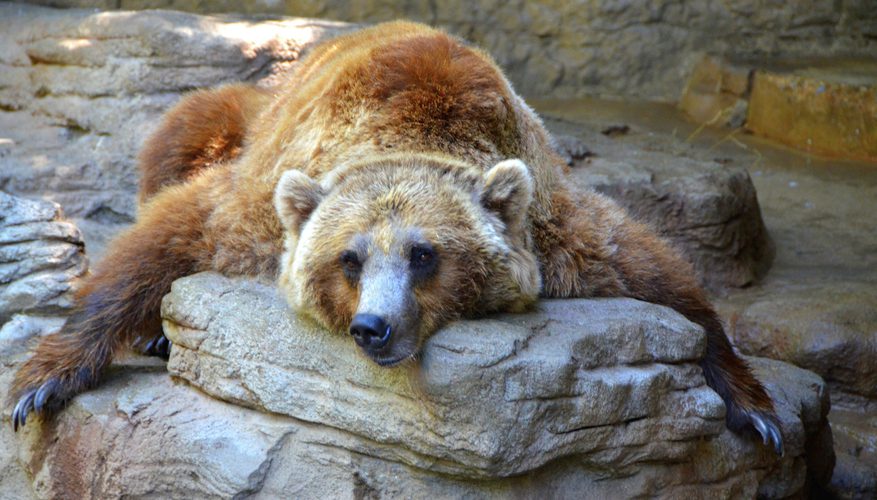

They experience a drop in heart rate from 40-50 beats per minute during the summer to 8-19 beats per minute during hibernation. Respirations in bears decrease from 6-10 breaths per minute normally, to 1 breath every 45 seconds during hibernation. Due to the highly insulating pelts of bears and their lower surface area to mass ratio than smaller hibernators, body heat is lost slowly which enables bears to cut their metabolic rate by 50-60% (Craighead and Craighead 1972 Rogers 1981). Many scientists now consider bears to be super hibernators. This allows bears to react to danger quicker than hibernators whose body temperature may be less than 40° F (4° C) and who have to warm up before they can move quickly (Bagget 1984).

Body temperature for hibernating bears remains above 88☏ (31☌) which is within 12☏ (11☌) of their normal body temperature of 100°–101☏ (37.7°–38.3☌) (Bagget 1984). Mammals considered true, or deep hibernators, such as chipmunks and ground squirrels, experience a drastic decrease in body temperature during hibernation. The denning period in Yellowstone National Park is approximately 5 months.įor many years some people did not consider bears to be true hibernators. Duration of winter denning is dependent upon latitude and varies from a few days or weeks for black bears in Mexico to 6 months or more for bears in Alaska (Kolenosky and Strathearn 1987, Haroldson et al. Bears hibernate during the winter months in most areas of the world. Hibernation is an adaptation to a seasonal shortage of food, low environmental temperatures, and snow cover on the ground (Craighead and Craighead 1972 Tietje and Ruff 1980).


 0 kommentar(er)
0 kommentar(er)
